Did you spot a brown bird with a red head and want to know what type it is? Or, maybe the bird had some brown on its body and some red on its head. Either way, you’ve come to the right place!
This article includes wild bird species in the US and Canada with brown bodies and red heads. They could have an entire body that is brown or parts of their body are brown. Or, they could have a full red head or a spot or stripe on their head that’s red – they’re all here!
Below are the 10 brown birds with red heads. Later you’ll see photos of them, a range map so you know whether they’re found in your area or not. Plus, you’ll discover habitat, diet and migration information of each bird.
| 1. House finch |
| 2. Purple finch |
| 3. Red crossbill |
| 4. Vermilion Flycatcher |
| 5. Arizona Woodpecker |
| 6. Cassin’s finch |
| 7. Common redpoll |
| 8. Gila woodpecker |
| 9. Northern flicker |
| 10. Red-faced warbler |
The next step is to identify it.
I’ve been backyard birding for more than 25 years and have seen many brown birds with red head so can speak to them. For the others, especially those outside my state of Wisconsin, I have solid resources I depend on to learn about those species. I got you covered 🙂
As I mentioned, this article includes all the information you need about each species in order to confidently identify it.
- A color-coded range map to help you further narrow down the species. Time of year is another clue to identifying the bird. The maps tells you if it’s a year-round bird, just there to breed, migrating through, or there during a non-breeding time such as winter.

- A description of each bird and that and the other gender’s description if it differs.
- The bird’s preferred habitat.
- The bird’s diet – even the foods it’ll eat at the feeder.
- The bird’s nesting habits
With more than 25 years of experience attracting backyard birds to my Wisconsin yard, I’ve studied all of the red-headed birds in my area so I have the information you’re looking for. For the remaining red-headed species, I rely on my trusty sourcebooks and friends at The Cornell Lab of Ornithology to guide me.
My hope is that this article will help you easily identify the bird that you saw or plan to see one day. So let’s get at it. The first section includes brown birds with mostly all red head followed by birds with brown and some red on their head.
Brown Birds with Mostly Red Heads
House Finch
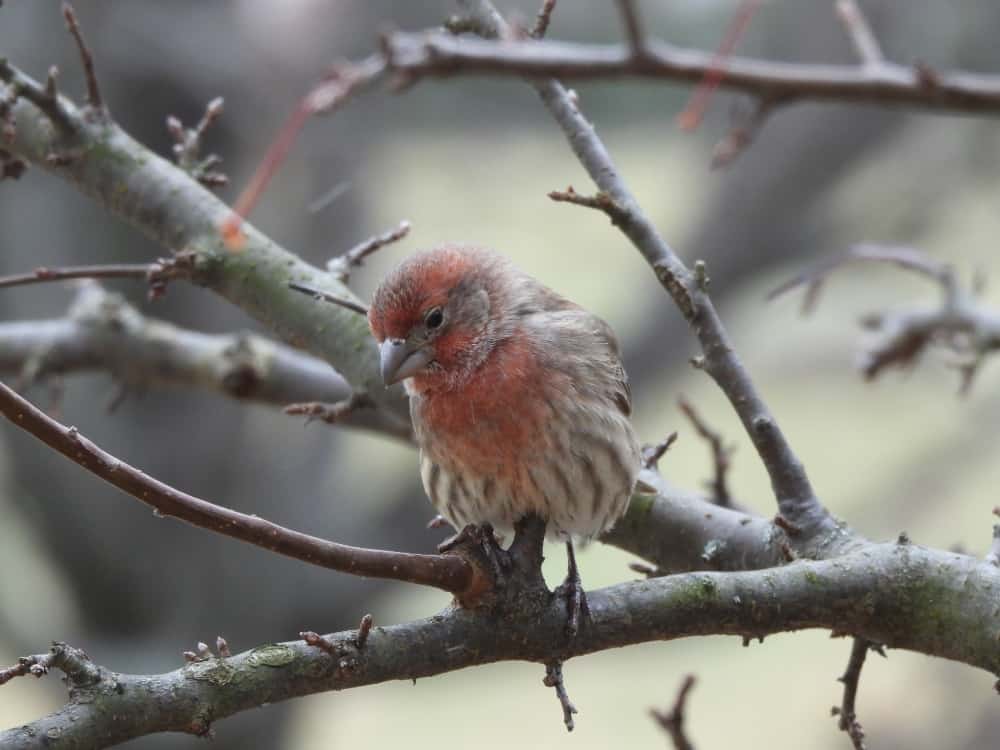
| Appearance | Small bird about 5″ long, orange/red face chest, and rump. Brown wings streaked with white. White belly with brown streaks. The Female and juvenile are brown with streaks of white. |
| Diet | Seeds, fruit, tree buds. |
| Feeder Food | Black oil sunflower seed is their favorite. |
| Habitat | House finches are found in the western and eastern parts of the US. They prefer to live around human dwellings (buildings, backyard trees, shrubs, barns. Also are found in parks and other urban areas. |
| Nesting | Nest: Small cup about 3-7″ wide, constructed from stems, leaves and plant roots, and feathers. The nests are built in coniferous or deciduous trees or even any place that holds a nest (ledges, vents, hanging plants). Broods: 1-6 broods/season Clutch: 2-6 eggs/brood (typical is 4-5) Egg color: Eggs are pale blue and speckled with black and purple dots. Egg size: 0.6 – 0.8 inches by 0.5 inches Incubation: 13-14 days and the young fledge between 12-19 days. |
| Migration | House finches are not migrators They remain in their year-round range for all seasons. Year-round range: Every US state except North & South Dakota, southern Ontario & British Columbia, and Mexico. |
Range Map
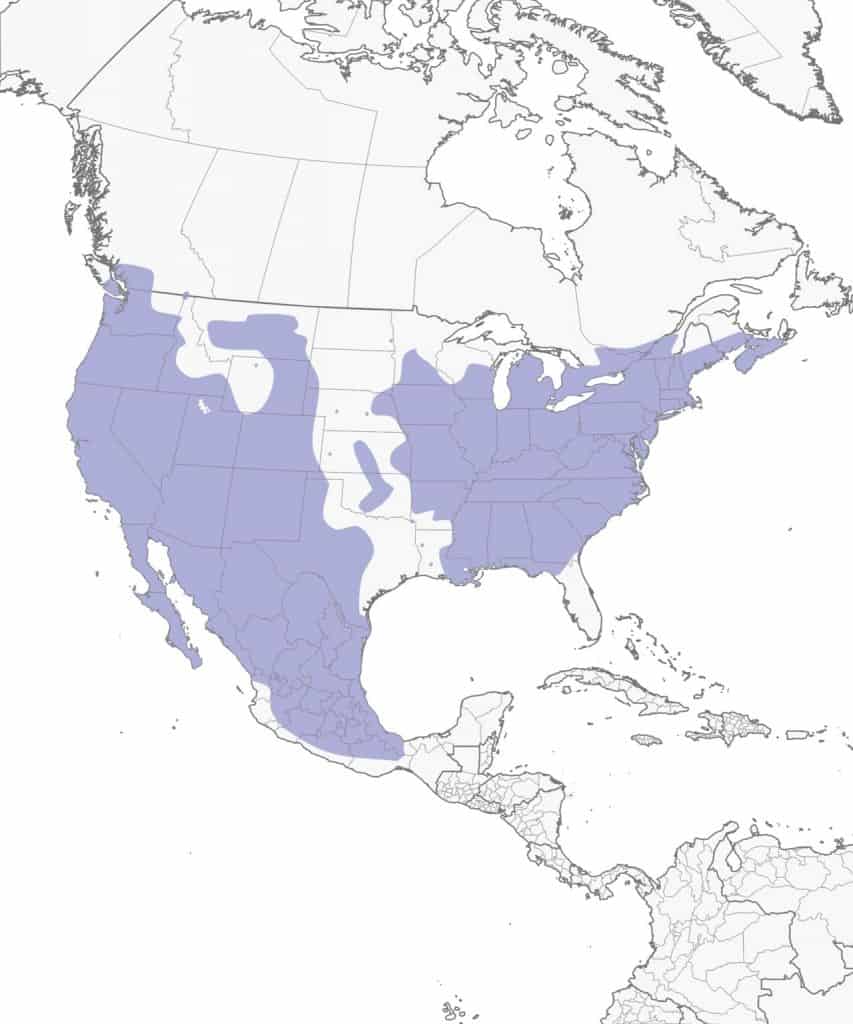
Purple Finch
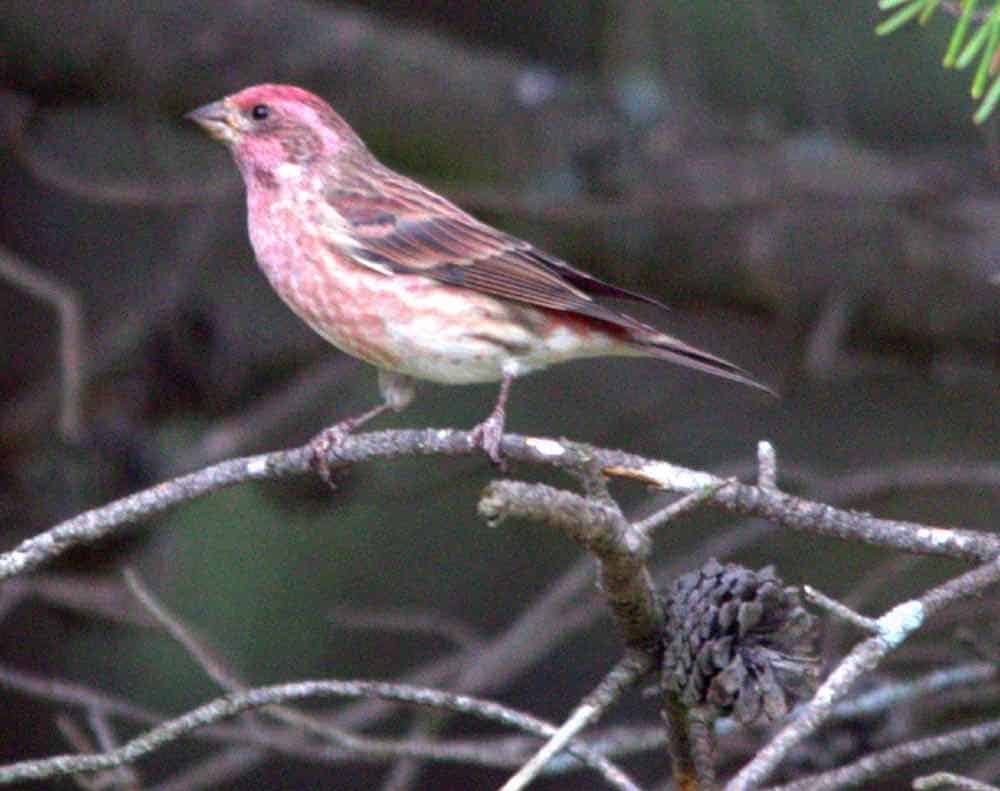
Appearance: Small bird about 6″ long with a raspberry-red head with lighter shades on the breast, back, and rump. The wings and tail are brown. Females are brown with brown striped breasts and white streaks across their eyes.
Diet: Seeds, insects, and fruit.
Feeder food: Black oil sunflower seeds are their favorite.
Habitat: Prefer coniferous forests in summer along with mixed forests near streams and tree-lined backyards.
Nesting: Purple finches’ nests are found anywhere from 2-60′ off the ground on a tree branch and constructed from twigs, sticks, and plant roots. Lined with grass and hair.
Migration: Purple finches are migrators. While many of them remain in their year-round range, others migrate north in the spring to breed and raise young. Then in the fall, the migrators head south for the winter.
Year-round range: The Pacific coast of Washington, Oregon, and California, and Canada’s British Columbia.
Breeding range: Just east of the year-round range along the Pacific northwest states and Canada’s provinces except for Nunavut.
Winter range: The eastern half of the US (except New England) and southern Arizona.
Range Map
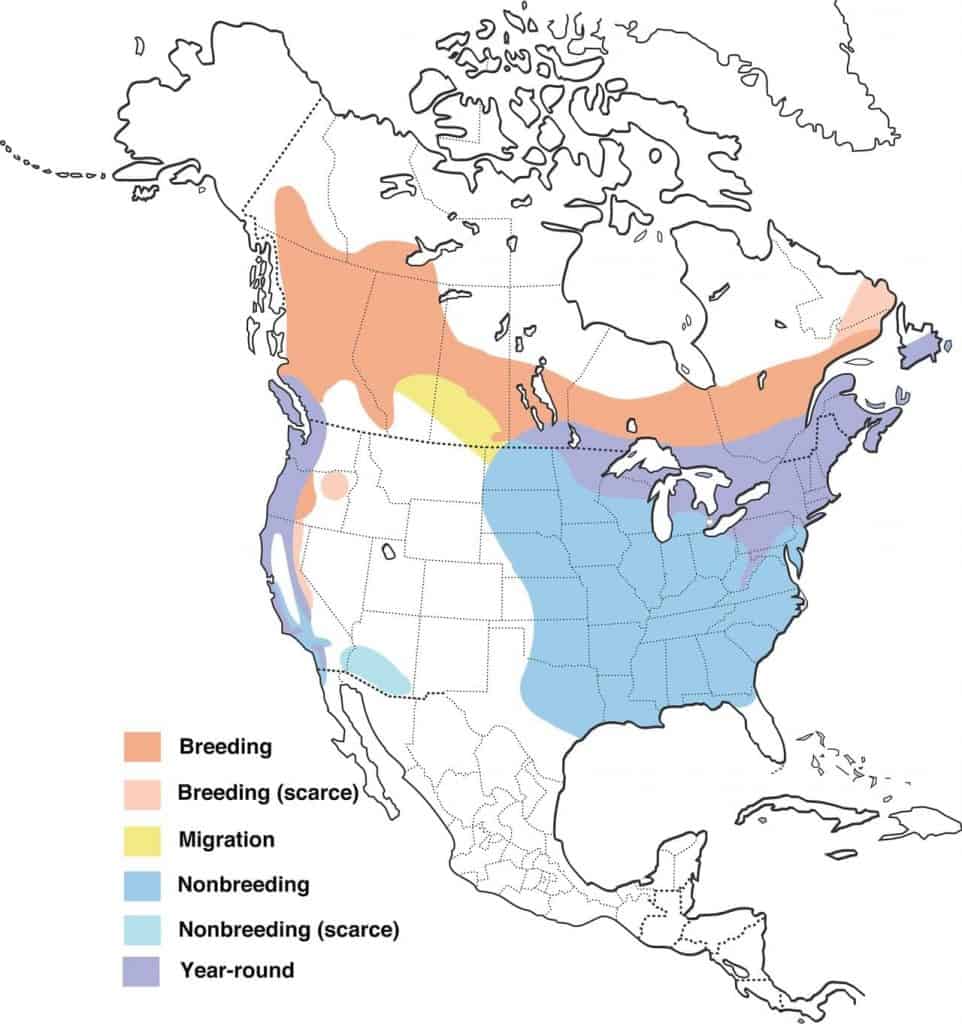
Red Crossbill
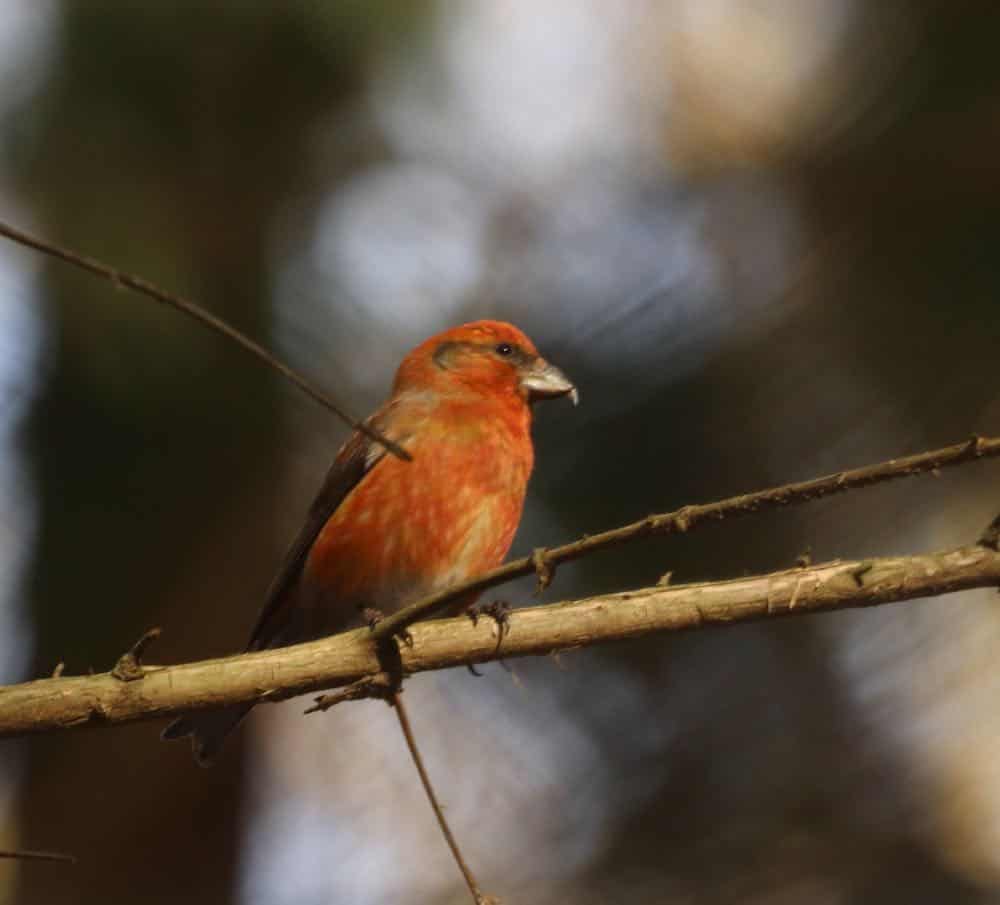
Appearance: The red crossbill is a small bird about 6.2″ long, dark red-orange with brown singes and tail. Their bill is long, pointed, and “crossed”. A brighter color of red on the head and rump. No crown. The female and young are pale yellow and gray.
Diet: Seeds – especially those inside pinecones. The bird’s “crossbill” is designed to pry open pinecones to get at the seed inside.
Feeder food: Black oil sunflower seed.
Habitat: Red crossbills either remain in their year-round territory for winter or expand south to create a wide winter range that includes Canada, the Pacific Northwest, states west of the Great Plains, Minnesota, Wisconsin, Michigan, New York, Vermont, Connecticut, and Massachusettes. They prefer mature coniferous forests.
Migration: While many red crossbills remain in their year-round range all seasons of the year, many migrate south for the winter.
Year-round range: The western half of the US, Mexico, and all Canadian provinces except Nunavut.
Winter range: Primarily northern Nevada, eastern Montana, North Dakota, South Dakota, northern Kansas, southern Minnesota & Wisconsin, northern Michigan, Pennsylvania, and New England. To a lesser degree, the remaining southern US states.
Range Map
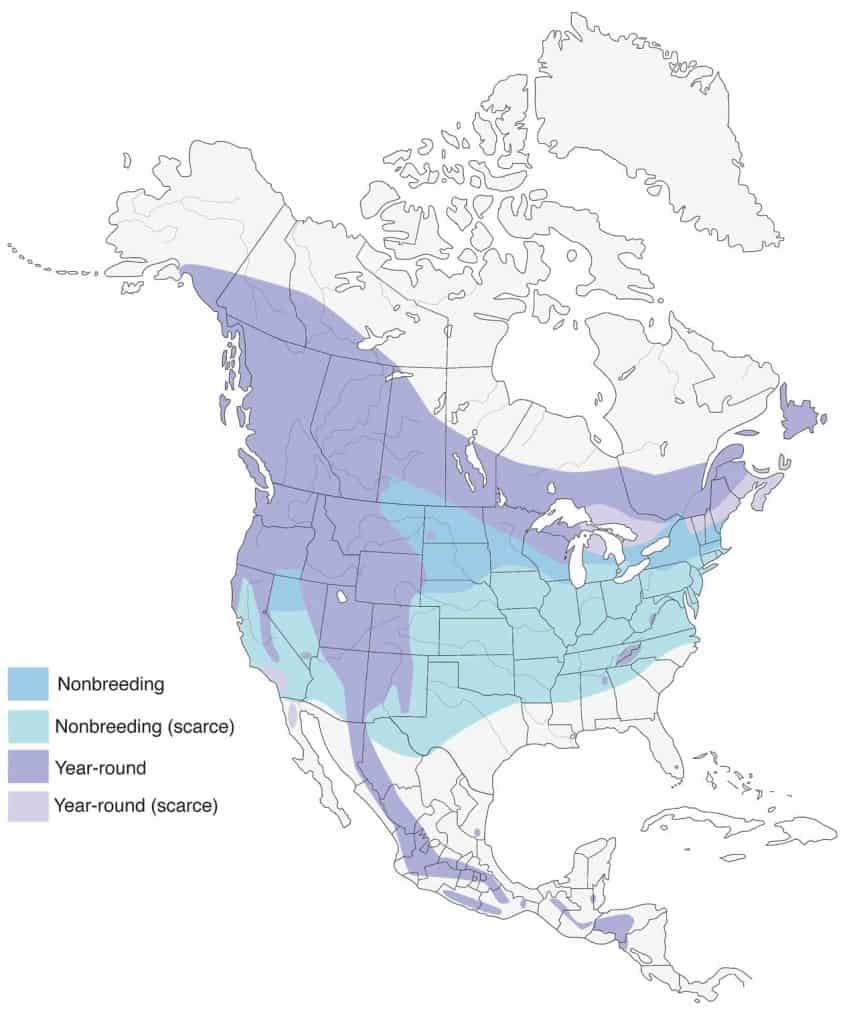
Vermilion Flycatcher
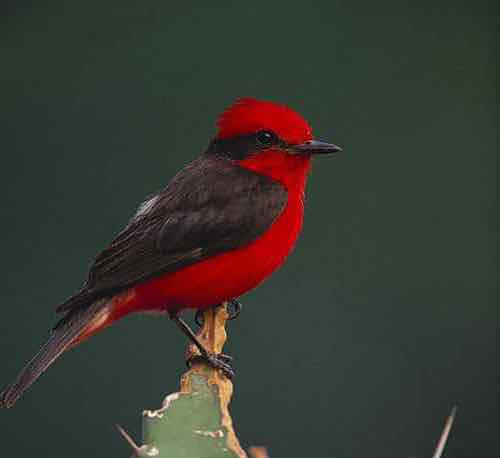
| Appearance | Small bird about 5″ long. Bright red-orange with brown back, feathers, tail, and a mask over each eye. Flathead and stocky chest with a dark brown pointy bill. Females are gray/brown with a white breast and rust-colored lower belly. |
| Diet | Flying insects are their favorite. They also dine on grasshoppers and butterflies, honeybees, beetles, and crickets. |
| Feeder Food | You may be able to entice them with mealworms. |
| Habitat | Primarily live in the far southwest in the scrubby desert, wooded areas near riverbanks and lowlands with shrubs. |
| Nesting | Small nest constructed of twigs, grass, and spiderwebs located about 10-20′ up in a tree in the fork of a branch. 1-2 broods/season, 2-4 eggs/brood, incubation is 13-15 days and the young fledge about 14-16 days. Eggs are white with light and dark spots. |
Range Map
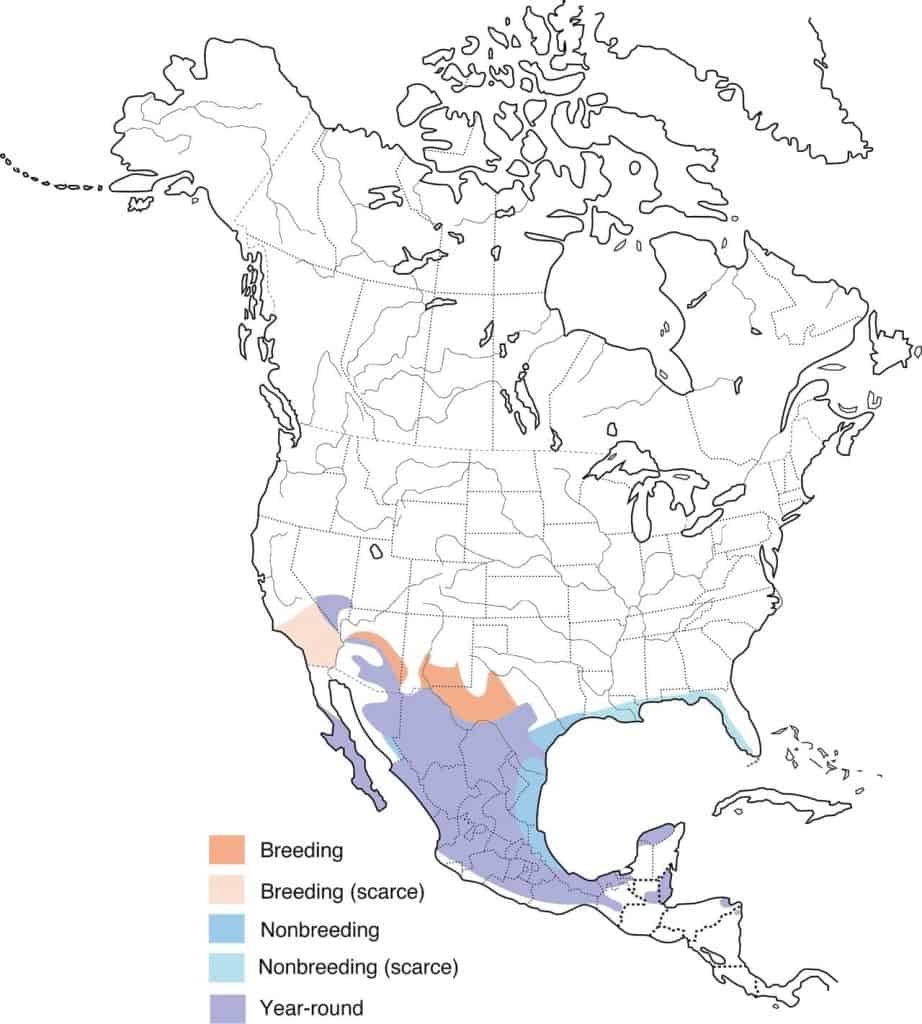
Birds with Brown and Some Red on their Heads
Arizona Woodpecker
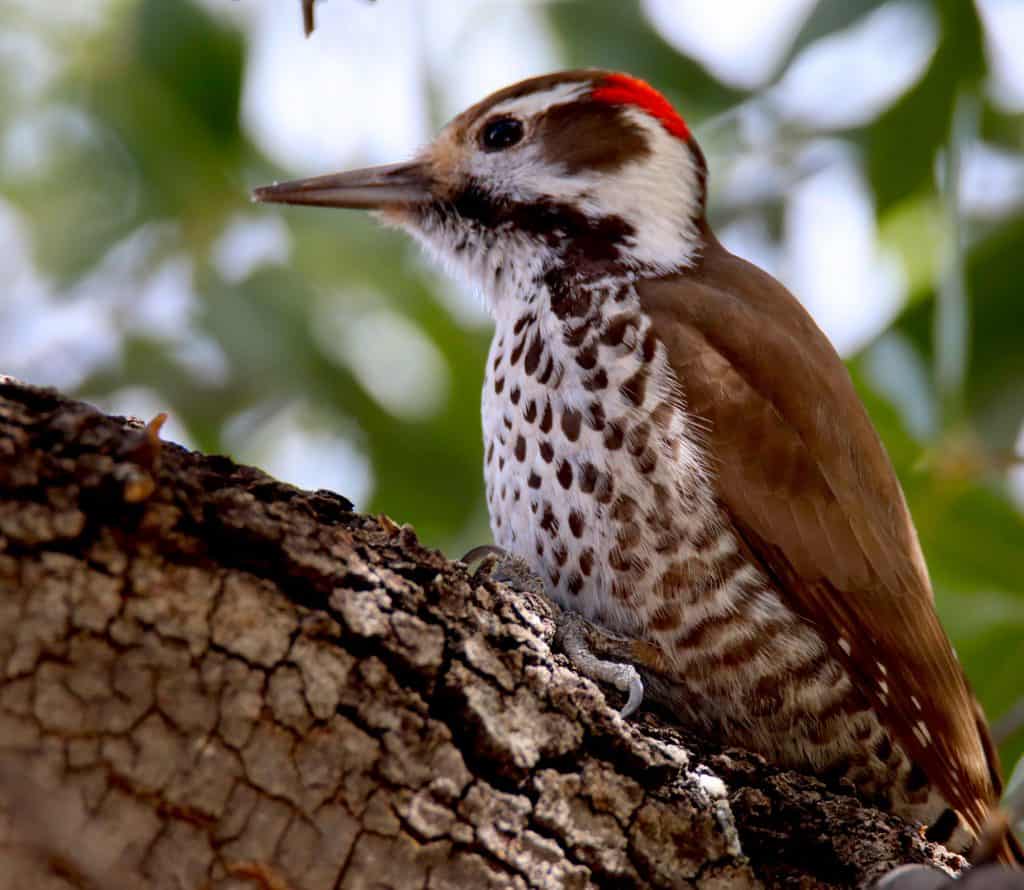
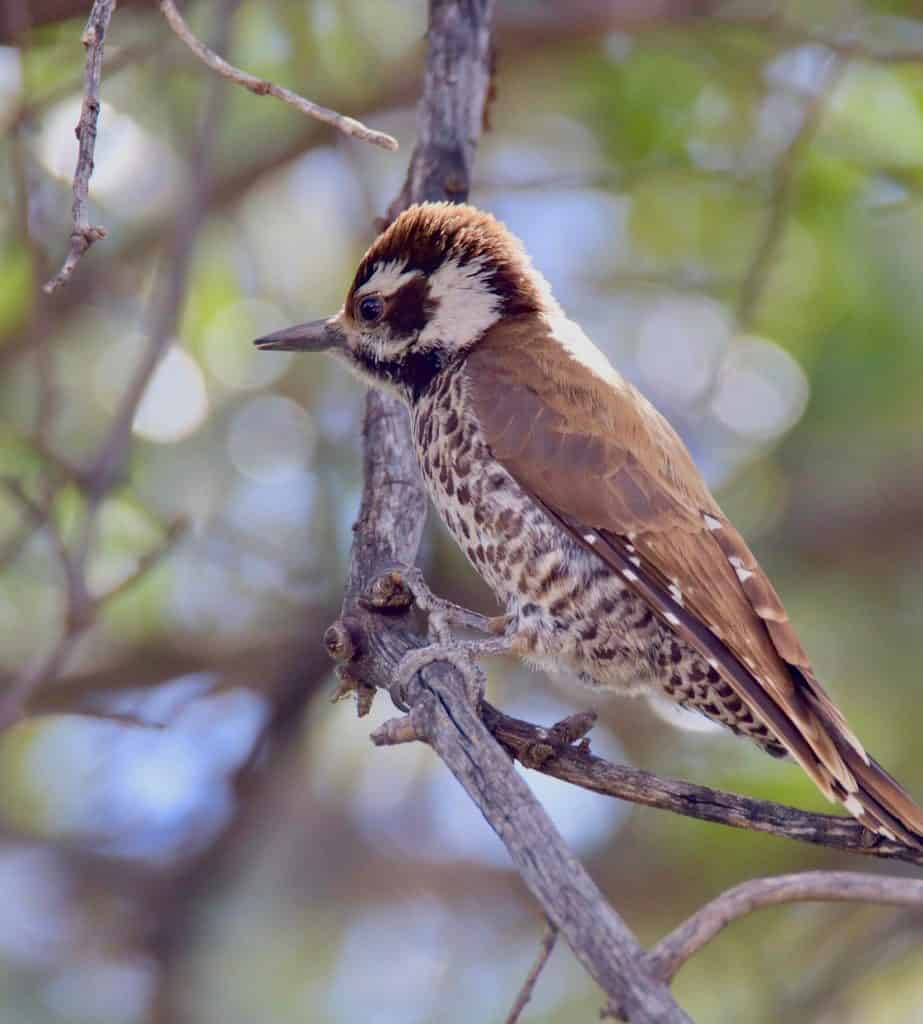
| Appearance | The Arizona woodpecker is a medium-sized bird about 7-8″ long and predominantly a dusty brown color. The belly is white and brown spotted, the head has a brown crown in front and red behind, a brown spot behind each eye, a brown streak across its lower neck, long pointy bill. The female is the same except her crown is all brown, no red. |
| Diet | Insects, especially beetle larvae. They also eat ants, fruits, and acorns. |
| Feeder Food | Unlikely to visit a feeder. |
| Habitat | Found only in southern Arizona, southwestern New Mexico, and Mexico, they prefer wooded areas. |
| Nesting | They’re cavity nesters and have 2-3 eggs/brood. They’re asynchronously so the chicks from a given brood are of different ages and sizes. |
Range Map
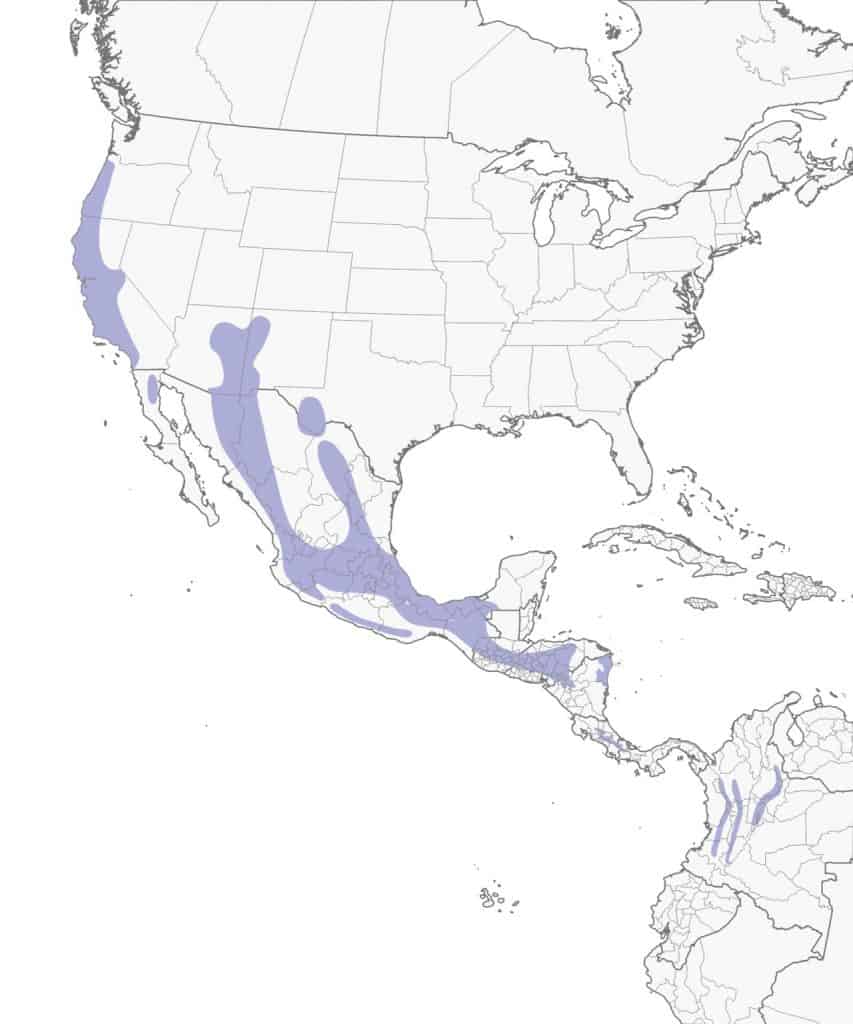
Cassin’s Finch
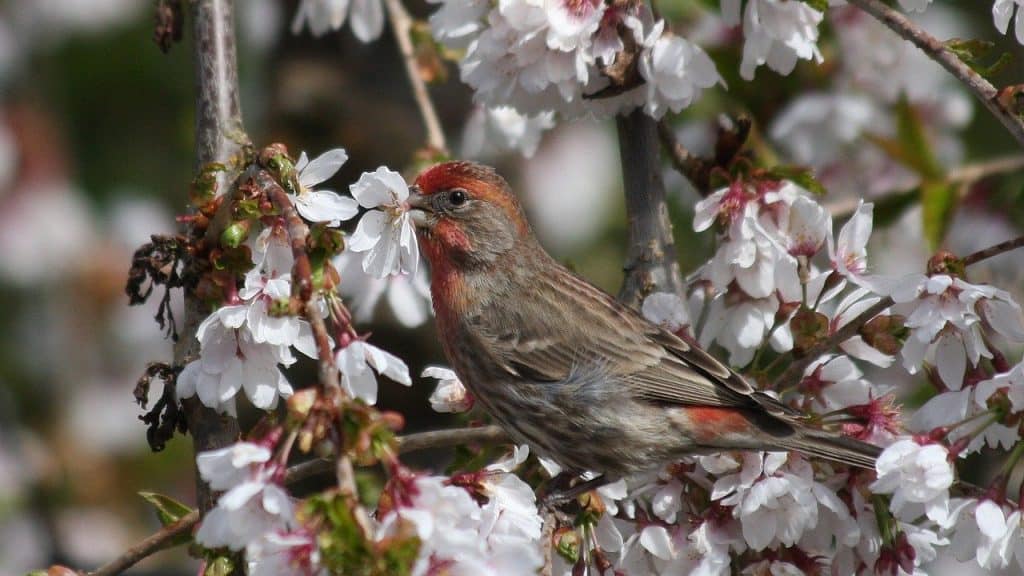
| Appearance | The Cassin’s finch is a small bird about 6 1/4″ long. They’re brown with a red cap, brown stripe across their cheeks, and white underneath with light pink streaks on the chest. The female is similar except she doesn’t have red or pink. her chest and belly are heavily streaked brown and she has a white streak above and over her eyes. |
| Diet | Seeds, buds, and berries. Occasionally insects. |
| Feeder Food | Black-oil sunflower seeds. |
| Habitat | Open forested areas rich with conifers. |
| Nesting | Nest: They build a nest high up in a conifer – about 30+ feet up. Broods: 4-5 eggs/brood Clutch: 3-6 eggs/brood Egg color: Light bluish with black, brown, and purplish speckles Egg size: 0.7 – 0.8 inches by 0.5 – 0.6 inches Incubation: 12-14 days. |
Range Map
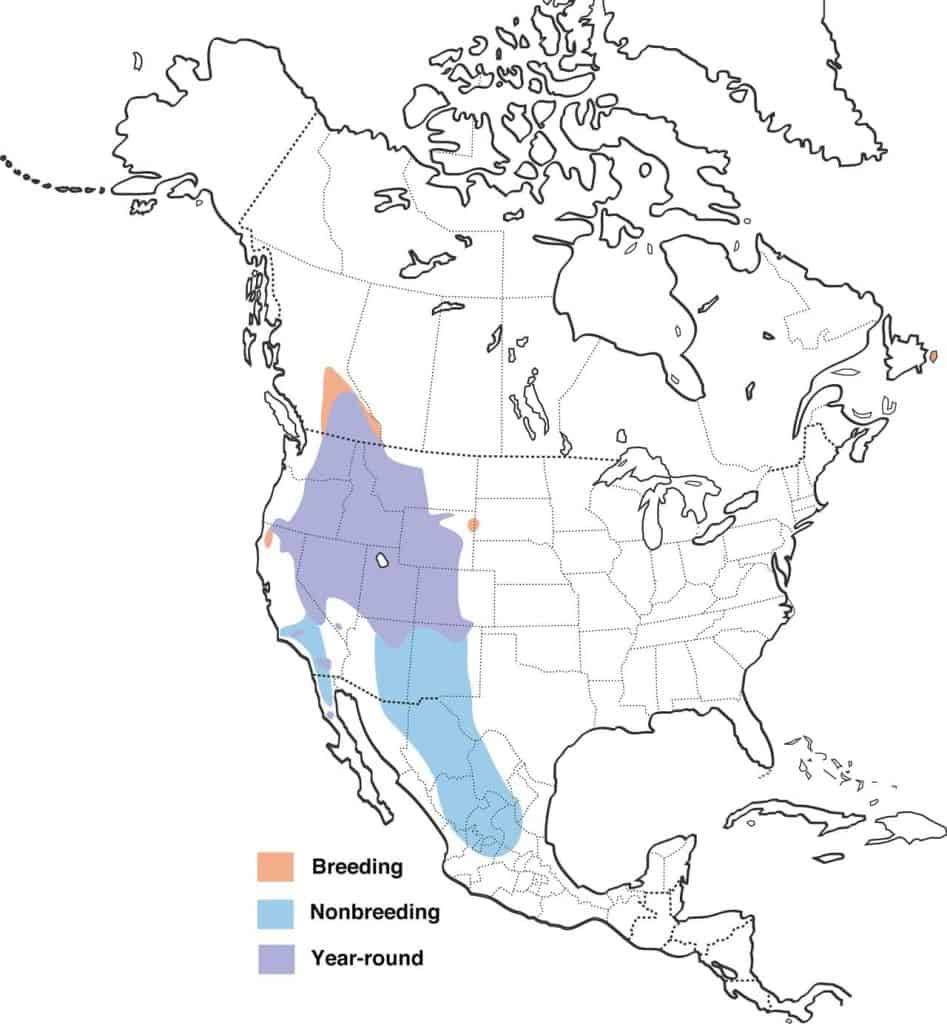
Common Redpoll
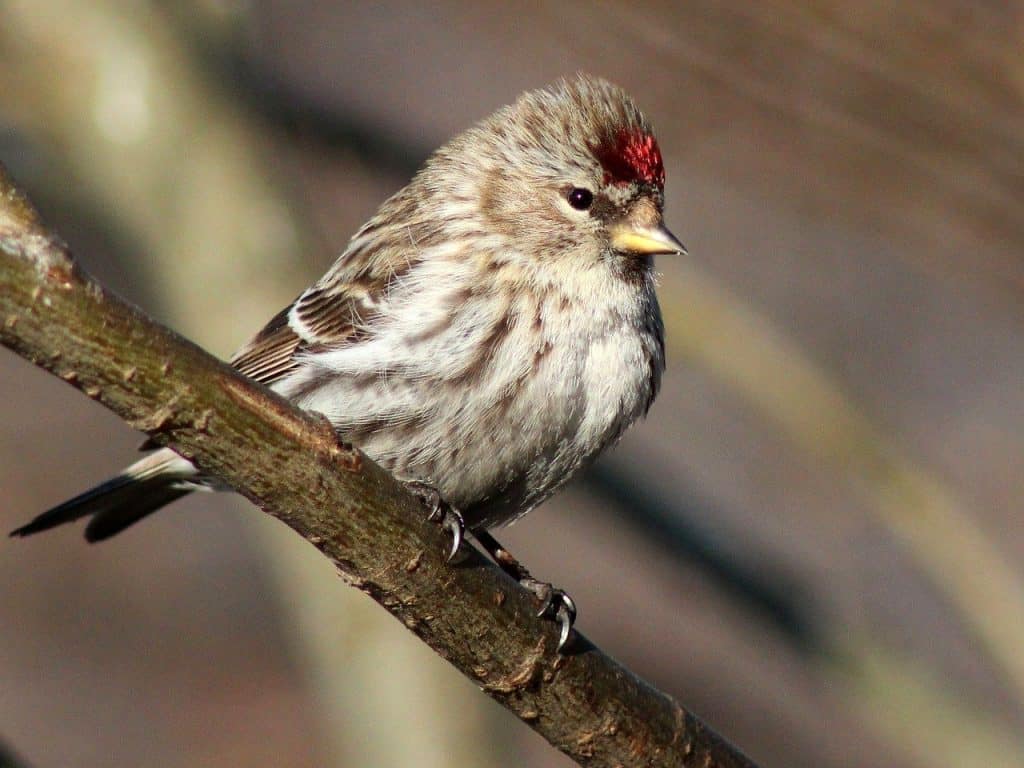
| Appearance | The common redpoll is a small bird about 5″ long. It’s a heavily streaked bird with a bright red crown, a black spot beneath the chin, and raspberry splotch on its chest. The female is similar except without the raspberry chest. |
| Diet | Seeds, insects. |
| Feeder Food | Black-oil sunflower seed, hulled sunflower seed, and nyjer. |
| Habitat | Open areas lined with trees. |
| Nesting | Cup-shaped nest. They have 1 brood/season and 4-5 eggs/brood that are pale green with purple markings. |
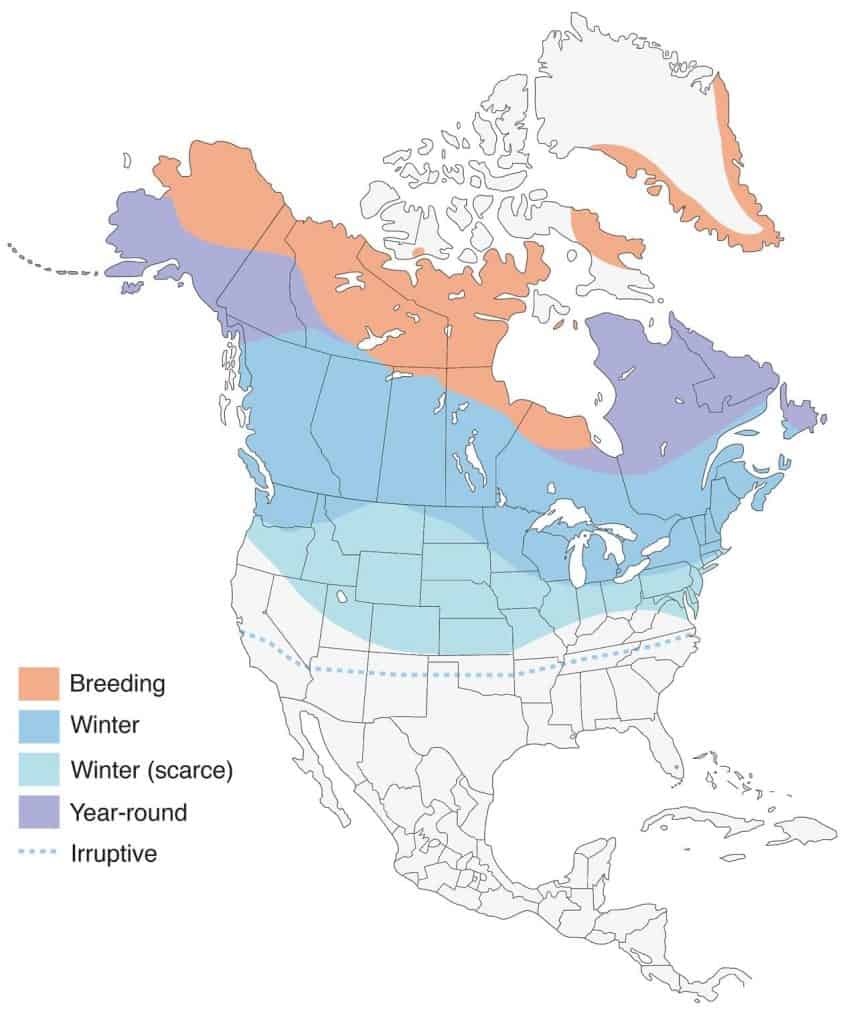
Range Map
Gila Woodpecker
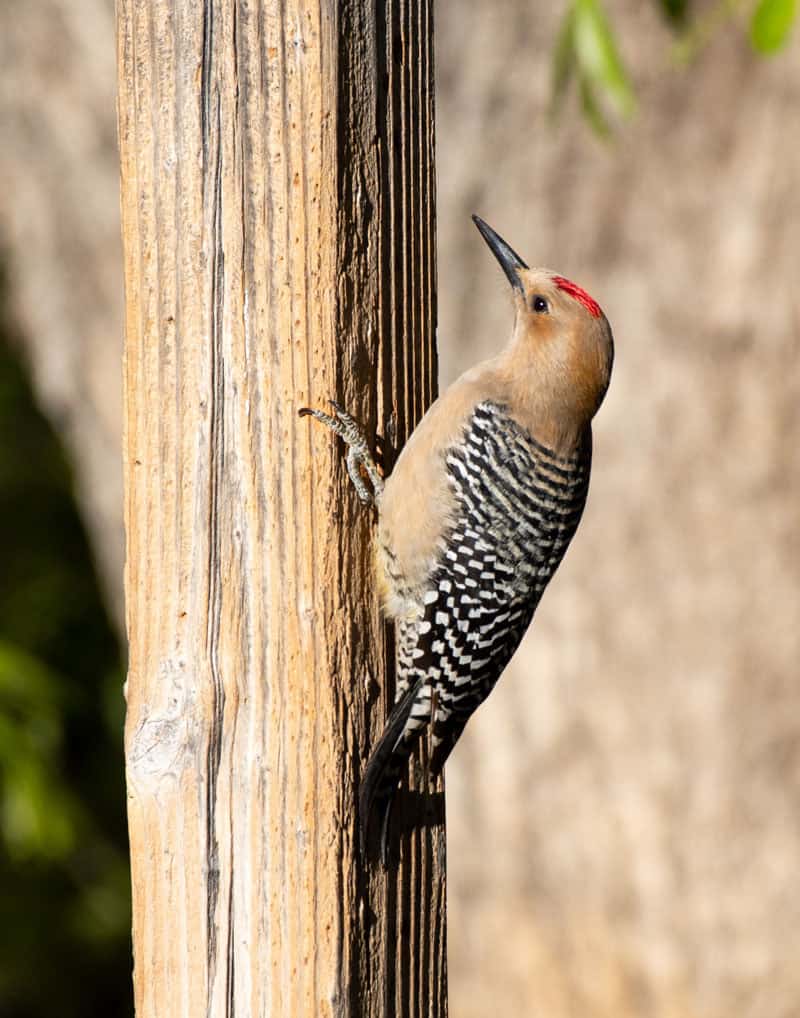
| Appearance | The Gila woodpecker is a large bird about 8-10″ long. They are pale gray with a zebra pattern on the back, wings, and tail, a yellow patch on their lower belly, a red stripe on their crown, and a long pointy bill. The female is similar without the red spot on the head. |
| Diet | These birds have a varied diet including Insects (especially cicadas, ants, beetles, grasshoppers), beef and pork animal meat (especially bacon rind), earthworms, small lizards, eggs and young of songbirds, fruits, and cultivated pecans. |
| Feeder Food | Suet and nectar. |
| Habitat | Gila woodpeckers primarily live in the Sonoran Desert of California, Arizona, New Mexico, and Mexico. |
| Nesting | Gila woodpeckers are cavity nesters, typically within an excavated Saguaro cactus. They often have 3 broods/season. |
Range Map
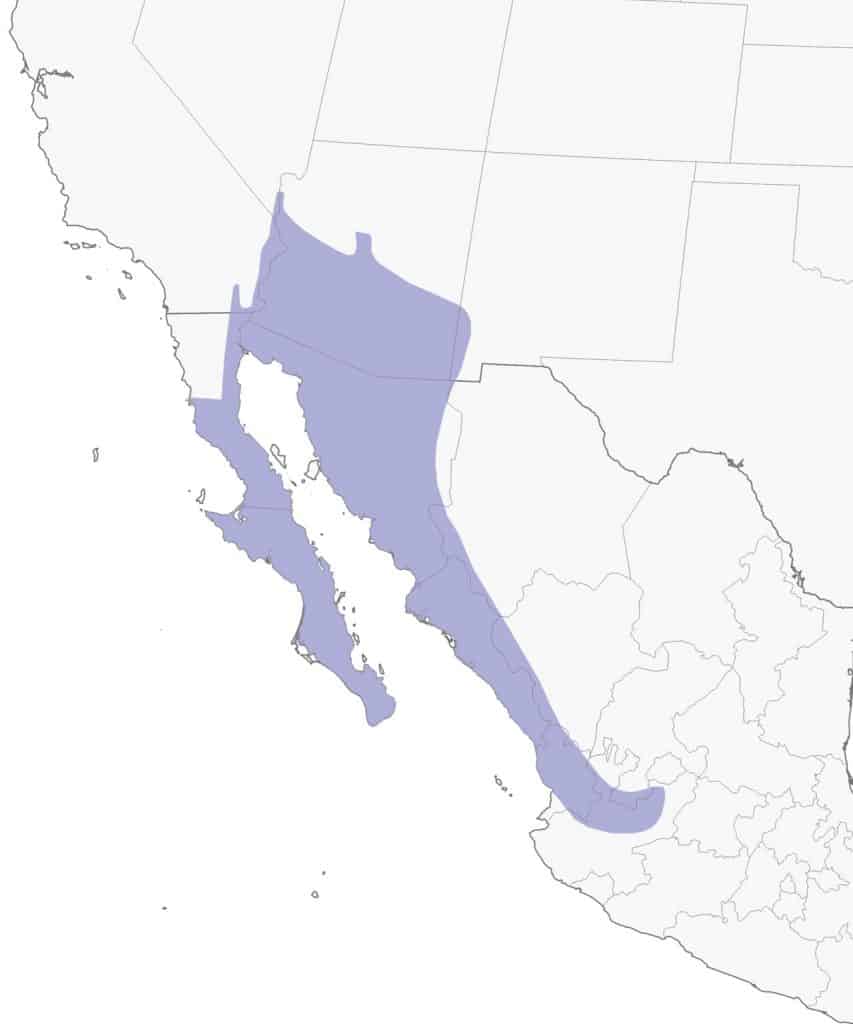
Northern Flicker
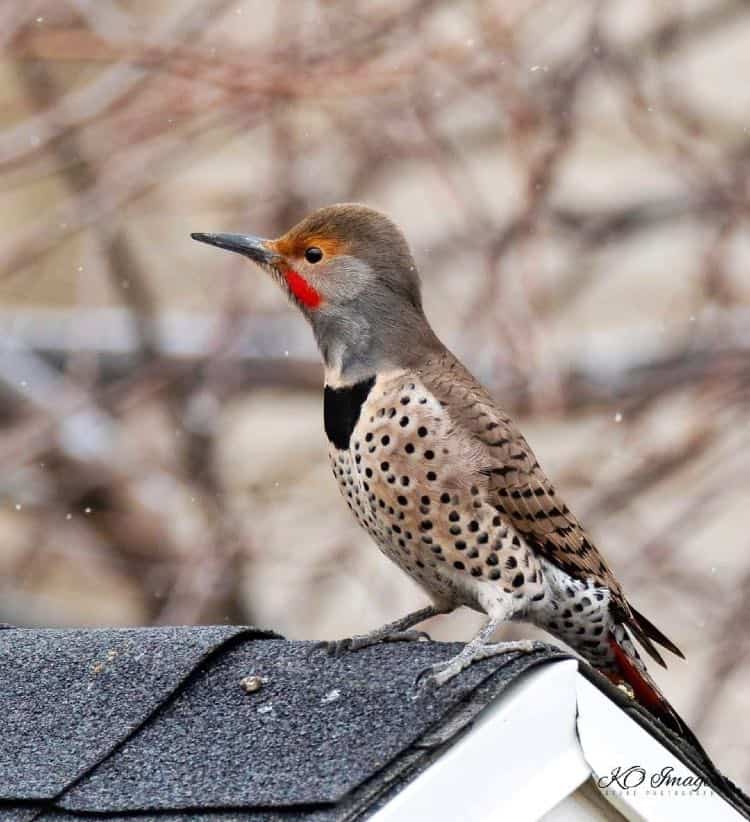
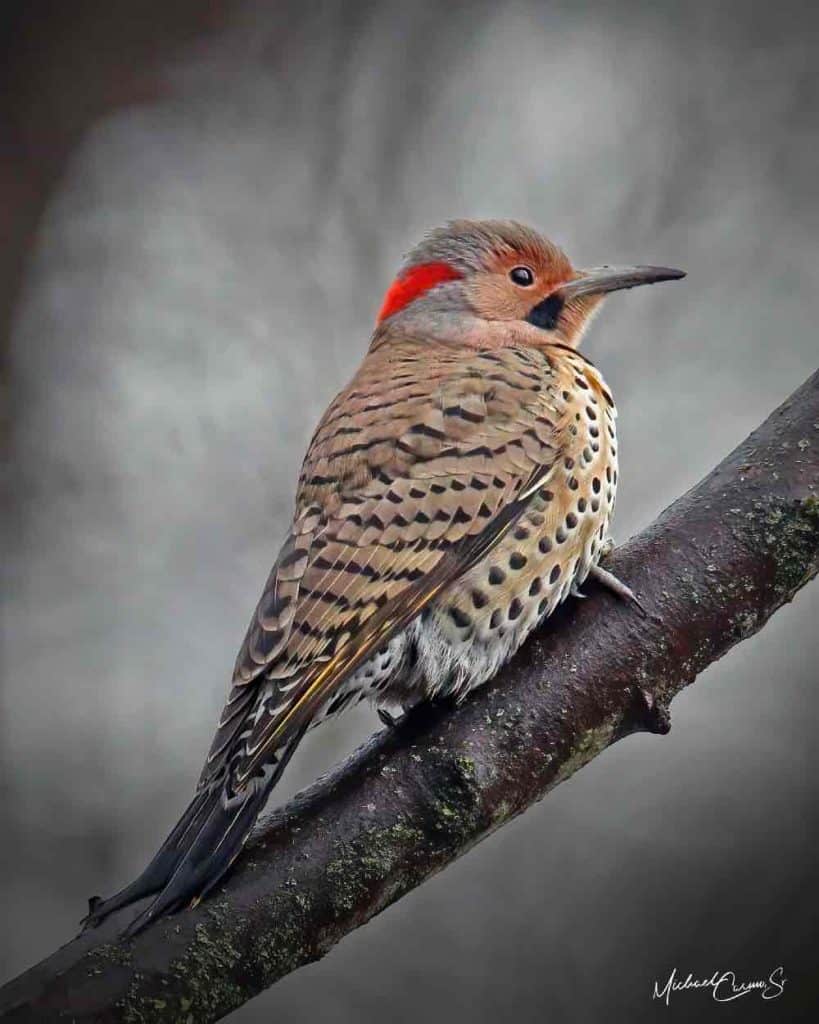
Appearance: A large bird about 12.5″ long. They have brown backs with black bars, a black crescent on the upper chest, and white with black spots on the belly and underparts.
• In the eastern part of their range, they are referred to as “yellow-shafted northern flickers” and have bright yellow underwings and undertail. They have a gray crown, tan face, and a red patch on the nape. The male has a black swipe on his cheek, the female does not.
• In the western part of their range, they are referred to as “red-shafted northern flickers” and have pink underwings and undertail, brown crown, gray face, and crown & nape are brown. The male has a red swipe on his cheek, the female does not
Diet: Insects, especially ants.
Feeder food: Hulled peanuts and suet.
Habitat: Open areas near trees.
Nesting: They are cavity nesters and have 1 brood/year. 5-8 white unmarked eggs per brood. Incubation is 11-14 days.
Migration: Northern flickers are migrators. Scientists believe the timing and duration of their migration from the breeding range to their winter range are dependent on weather. They generally migrate at night and travel in large but loose flocks of up to 100 or so birds.
Year-round range: Each US state as well as parts of British Columbia,
Breeding range: Alaska, Canada, and inland parts of their year-round range in Washington, Oregon, and California.
Winter range: Many will winter in the year-round range while others head further south into southeast California, southwest Arizona, Texas, and Mexico.
Range Map
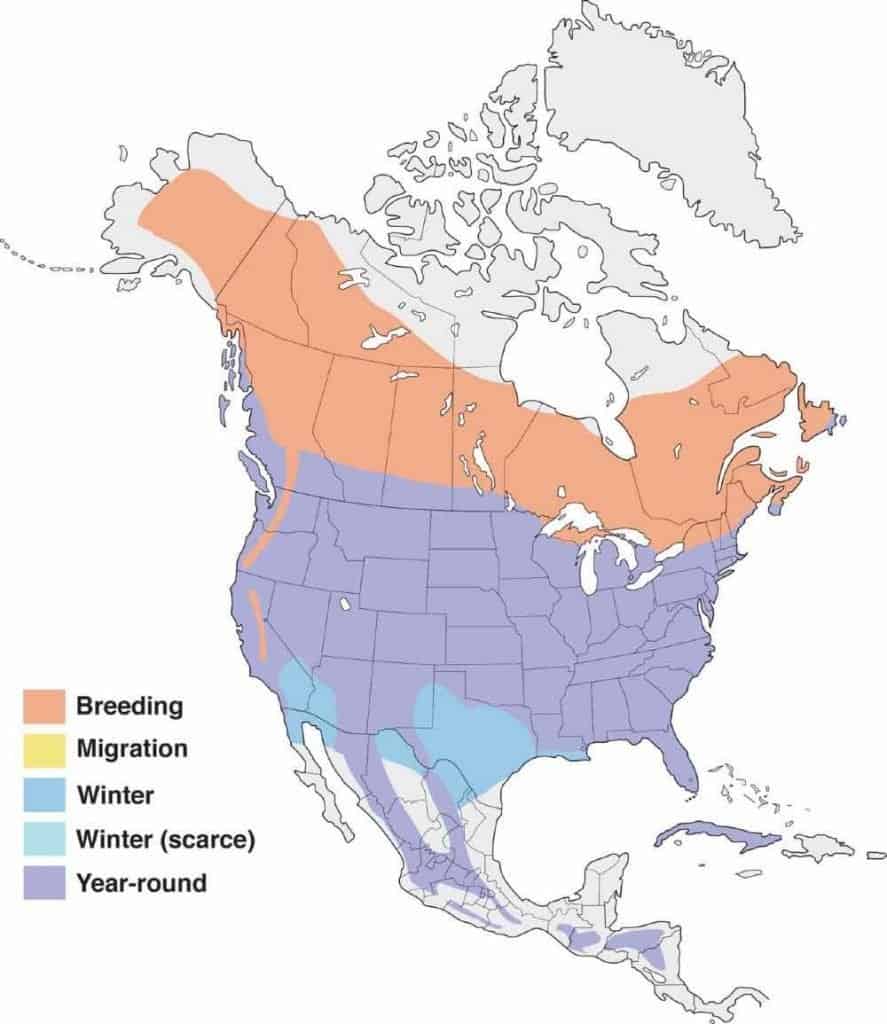
Red-Faced Warbler
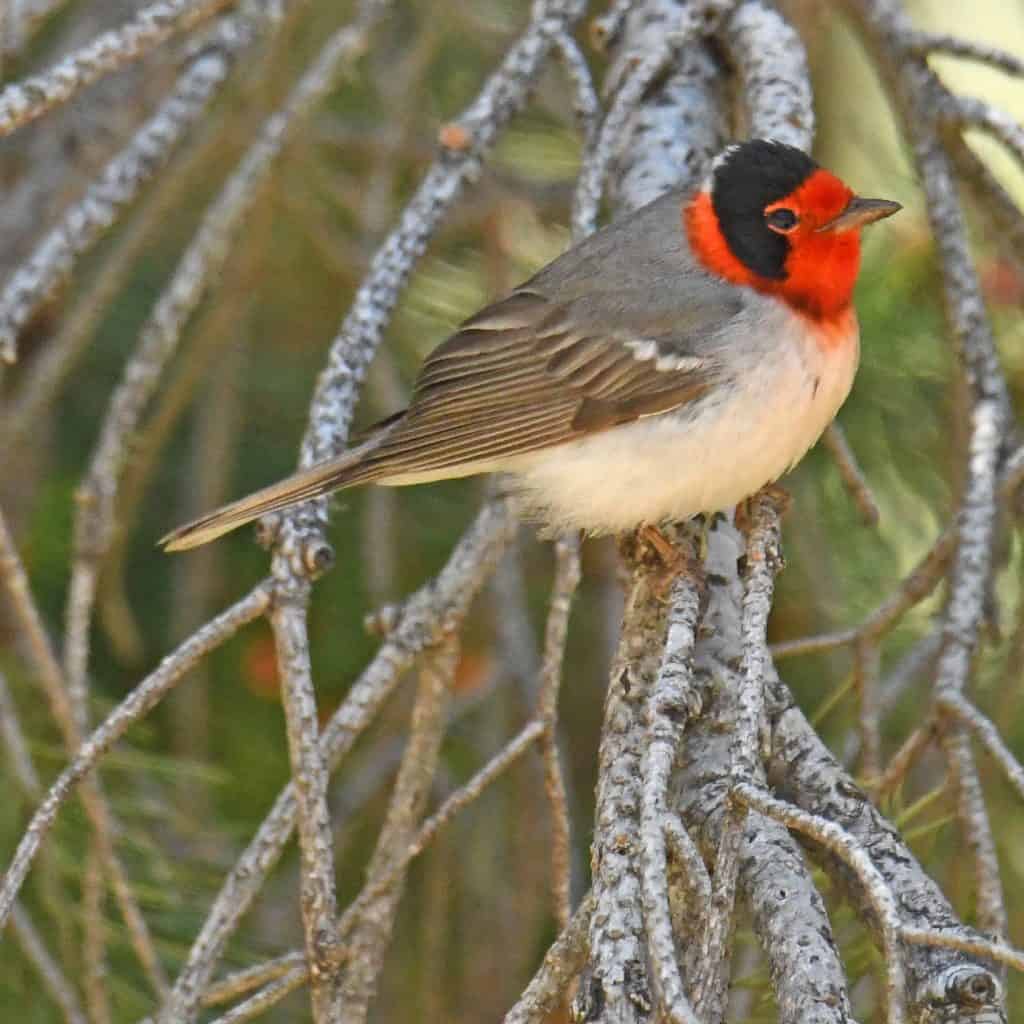
| Appearance | Red-faced warblers are tiny little birds about 5.5″ long. They have gray upperparts, brown wings, and a reddish-orange head with a brown band around the top and on its nape. Underparts are white, the beak is stubby & short while their tail is rather long. Females are similar except their face is orange rather than reddish-orange. |
| Diet | Insects. |
| Feeder Food | Unlikely to visit a feeder. |
| Habitat | Often found above sea level in the mountains of Arizona and New Mexico. They prefer pine and deciduous trees like oaks and aspen. They can also be found in canyons and other areas with streams. |
| Nesting | Nest: Small cup about 4″ x 2″, comprised of bark, leaves, and pine needles. Animal hair and soft grass line the nest. Clutch: 3-6 eggs/brood Egg color: Eggs are white with tiny brown specks – especially at one end. |
Range Map
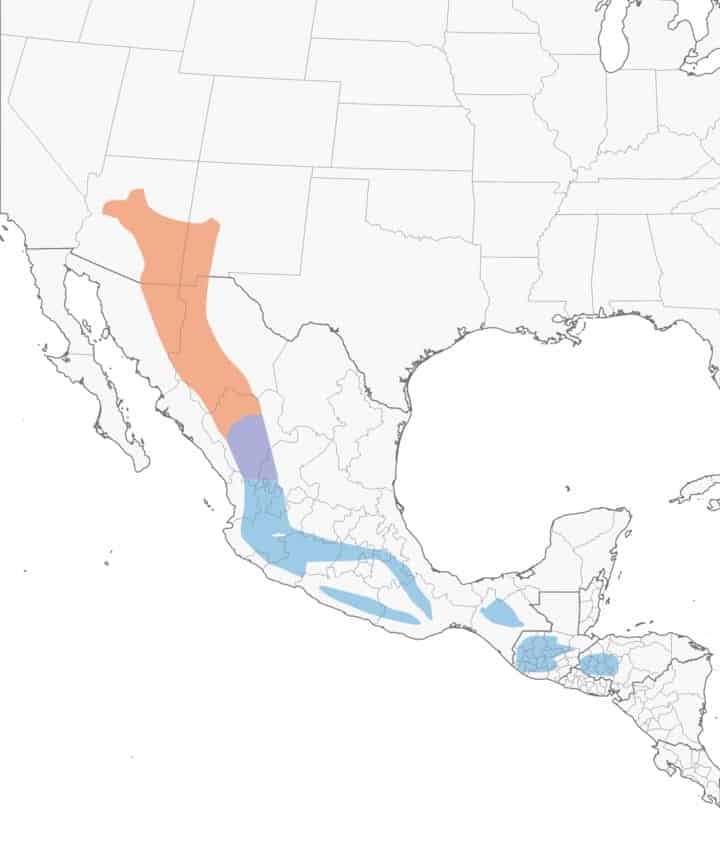
Wrapping Up
Brown birds with red heads come in all shapes & sizes. They also exist in various parts of North America.
This article contained all the information you need for accurate and fast identification of the brown bird with a red head that you spotted.
- First, take a look at color photos of birds matching your description.
- Then, check out the species’ range map to confirm whether or not the species lives in your area.
- Finally, learn about its habitat and diet to further refine the characteristics of the bird you saw and the known facts about it.
- You’ve got a match!
So, did you identify the bird you were interested in? Let me know below in the comments.
Happy Birding!
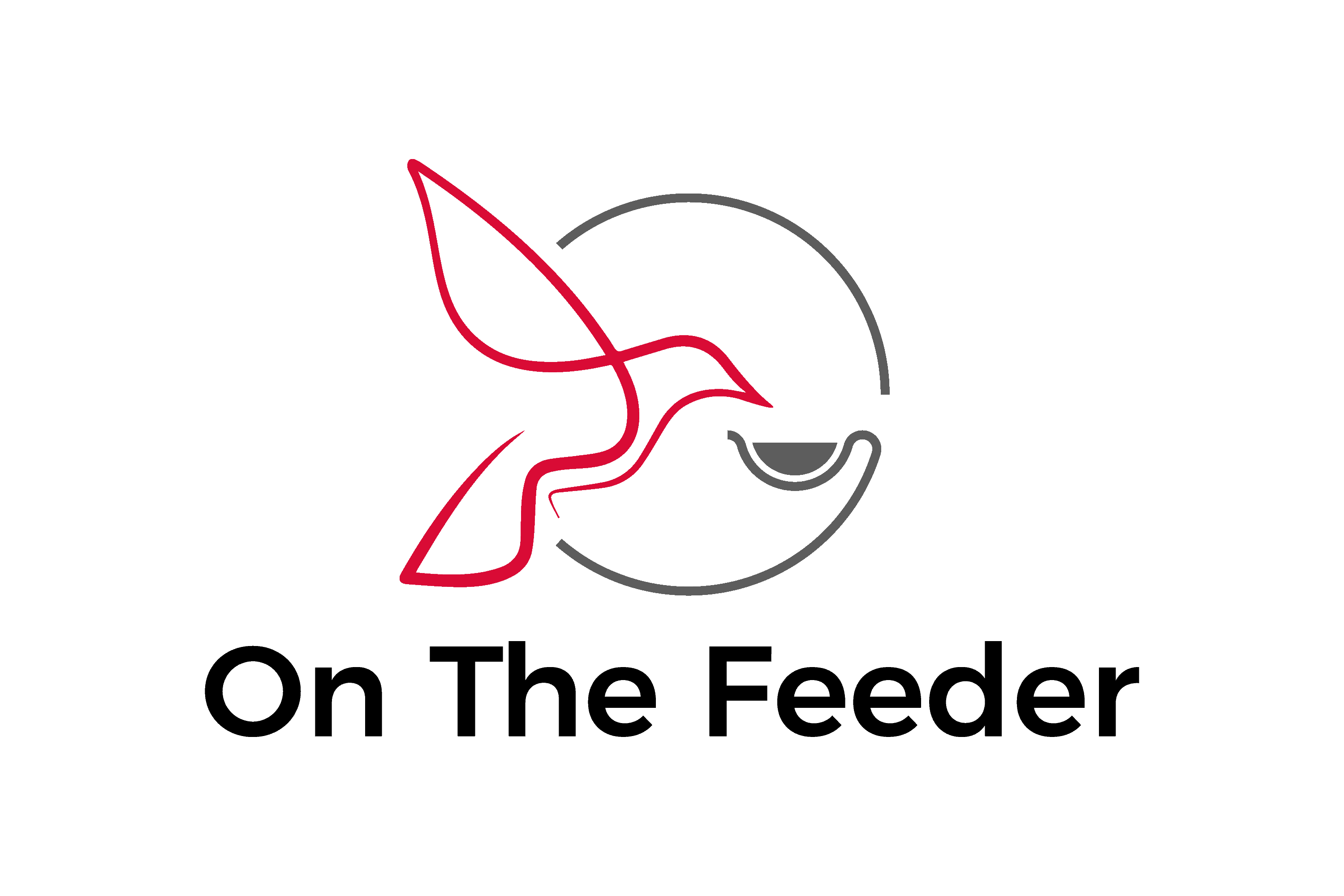
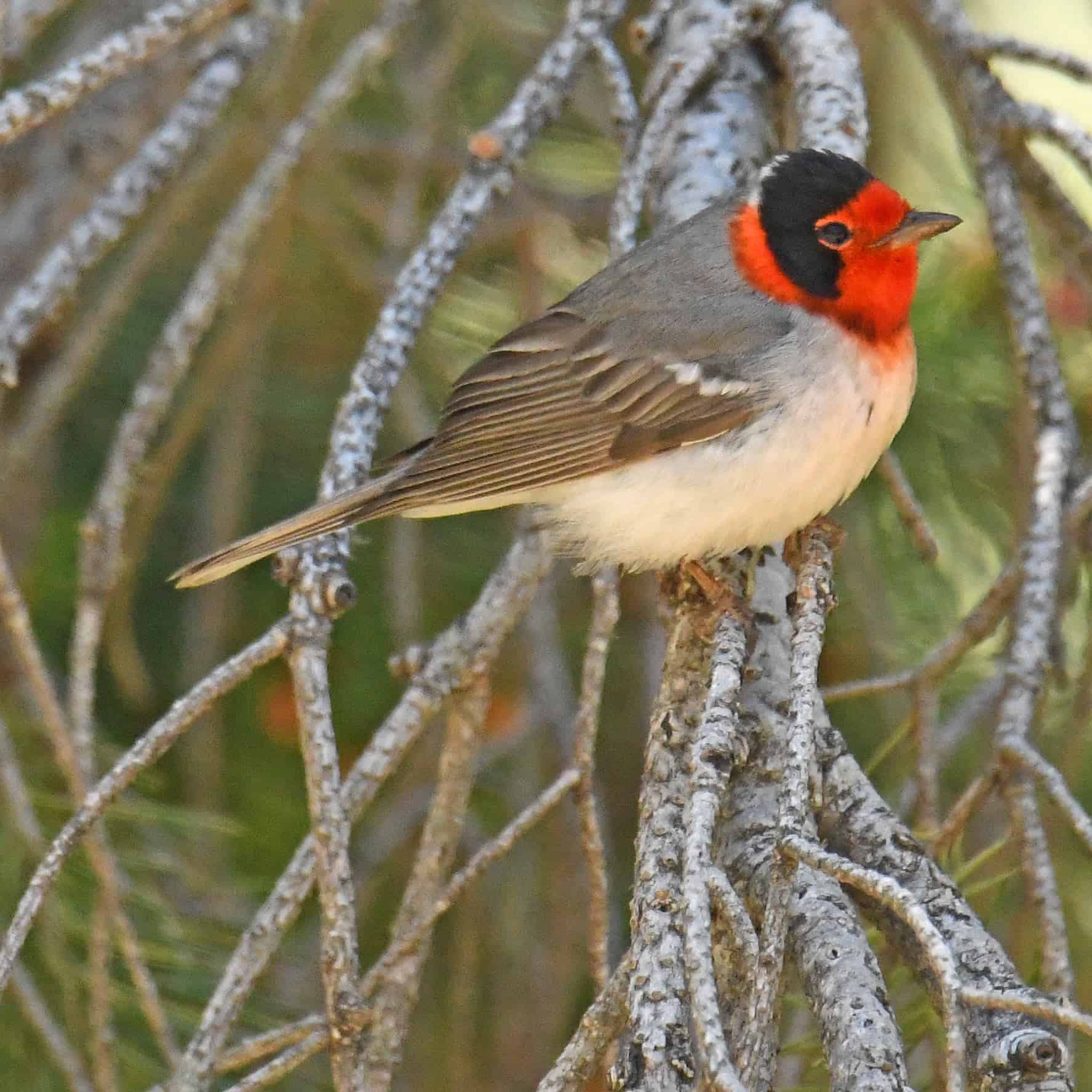

You helped me to identify the Yellow-Shafted Northern Flicker. I tried other resources to identify it with no luck. Thank you so much.
You’re welcome!